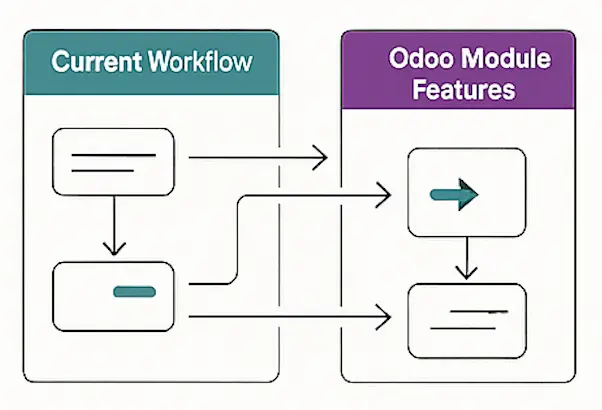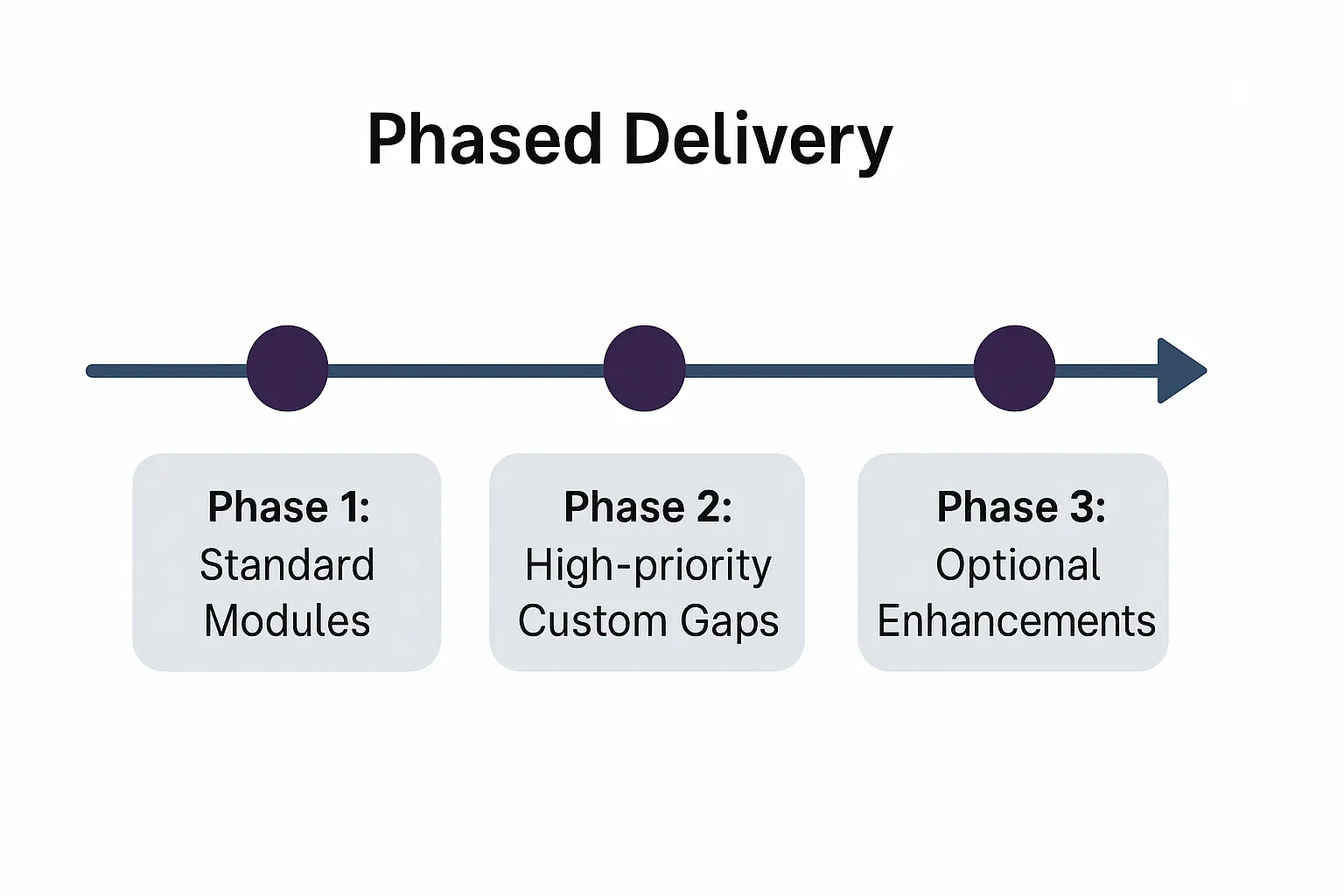When you're embarking on an Odoo implementation, one of the first and most crucial steps is performing a Gap Analysis. While it’s easy to talk about aligning business processes and ERP features, the real magic happens when you dive deep into the client's workflow, identify friction points, and build a collaborative plan to bridge the gaps.
This guide will walk you through:
- How to perform a Gap Analysis
- How to align with your client
- Key dos and don’ts
- Real-life inspired visuals to include in your documentation or demos
What is Gap Analysis in Odoo Implementation?
Gap Analysis compares a client’s current business processes and needs with Odoo’s standard capabilities. It helps identify:
- What’s already supported by Odoo
- What needs customization, integration, or process change
- How to bridge the gap efficiently
Step-by-Step: How to Perform a Gap Analysis for Odoo
1. Conduct a Discovery Session
Start with stakeholder interviews and process walkthroughs. Your mission: understand pain points, daily operations, and goals.
Tip: Use structured questionnaires by department—Sales, HR, Accounting, etc.
Visual Aid:
A flowchart comparing the client’s current workflow to Odoo module features, highlighting matches and gaps.

2. Map Current vs. Future State
Create a Process Comparison Matrix, this builds client confidence by showing clear planning.
| Process | Current Tool | Odoo Equivalent | Gap | Action |
|---|---|---|---|---|
| Lead Tracking | Excel | Odoo CRM | No Gap | Use standard CRM |
| Payroll | Local Software | Odoo Payroll | Partial Gap | Configure localization |
| Expense Approval | Email Threads | Odoo Expenses | Gap | Customize approval flow |
3. Analyze Technical and Functional Gaps
Break it into:
- Functional Gaps: Workflows, missing reports, specific approvals
- Technical Gaps: Integrations, data migration, performance
Ask yourself:
- Is it a legal/compliance requirement?
- Can it be solved by configuration or Studio?
- Is there a 3rd-party app for it?
4. Propose Actionable Solutions
For each gap, outline:
- Resolution: config, app, custom code
- Effort estimate: hours, cost
- Impact: low / medium / high
- Dependencies and timeline
5. Document and Validate With the Client
Create a clean visual document for review and approval:
- Executive Summary
- Department-wise Gap Overview
- Proposed Solutions
- Implementation Roadmap
Visual Aid:
A timeline showing phased delivery:

- Phase 1: Standard Modules
- Phase 2: High-priority Custom Gaps
- Phase 3: Optional Enhancements
Ask the client to sign off—this avoids disputes later.
Finding Common Ground With the Client
Clients often want heavy customization. Your goal: educate and align.
1. Educate with Real-Life Examples
Example:
"Another logistics company used approval stages instead of building a new workflow. It worked well and reduced dev costs."
Use short Loom videos and annotated screenshots to demonstrate!
2. Prioritize Requirements Collaboratively
Build a matrix like:
| Requirement | Priority | Notes |
|---|---|---|
| Multi-level PO Approval | Must-Have | Compliance rule |
| WhatsApp Integration | Nice-to-Have | Add in Phase 2 |
This helps set realistic expectations.
3. Recommend Configuration Over Customization
Instead of building a custom module, consider:
- Odoo Studio
- Custom workflows using native tools
- Automated actions with standard states
Example: Use custom states + automation instead of a custom status tracker.
4. Leverage Odoo Roadmap and Community
Highlight:
- Features planned in future Odoo releases
- Existing community apps from the Odoo App Store
- Budget-friendly alternatives
Dos and Don'ts of Odoo Gap Analysis
DO |
DON'T DO |
|---|---|
| Involve all departments from the start | Don’t skip voices—it leads to missed gaps |
| Validate assumptions (screenshots, demos, access) | Don’t rely on verbal descriptions alone |
| Set expectations early (what’s “possible” vs “affordable”) | Don’t say yes to everything—customization has a cost |
| Document everything in writing | Don’t leave decisions undocumented—it causes problems at UAT/go-live |
Final Thoughts: Gap Analysis Is Your Best Friend
A well-run Gap Analysis ensures your Odoo implementation:
- Meets real business needs
- Avoids costly rework
- Earns stakeholder buy-in
- Delivers on time and budget
Remember: ERP success isn’t about the software alone—it’s about change. Gap Analysis gives you the blueprint to lead your client through that change with confidence.
